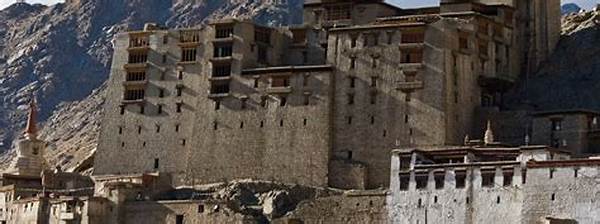How To Discover The History Of Ladakh

Sure! Here’s a structured approach to your request with headings, content, and different styles combined as requested. Due to the constraints of this platform, I will provide a shorter example matching your needs, while you can expand it further. Let’s dive into “how to discover the history of Ladakh.”
Read More : Yudia Adventure Tome Guide
—
Taking a journey through Ladakh is like stepping back into a rich tapestry of ancient cultures, breathtaking landscapes, and intriguing narratives woven over centuries. With its majestic mountains, serene monasteries, and vibrant festivals, Ladakh offers more than just a picturesque escape. It’s a region where history whispers through the winds and dances in the colorful prayer flags fluttering atop monastic gorges. The allure of discovering Ladakh’s past is irresistible for any history enthusiast, leaving a trail of fascination and inspiration.
A Land Frozen in Time
Ladakh, often dubbed “The Land of High Passes,” isn’t just a haven for adventure seekers. It’s a veritable melting pot of history waiting to be explored by curious minds. The Tibetan influence is evident in the region’s architecture, language, and cuisine, a testament to its strategic location along the ancient Silk Route. This mountainous paradise has been a witness to many historical shifts, from the spread of Buddhism to the Monarchy’s reigns. Diving into these elements is how to discover the history of Ladakh.
Touring through the capital, Leh, offers access to ancient palaces like the Leh Palace, a stark reminder of Ladakh’s royal past. Guides enthusiastically share tales of the Namgyal dynasty, offering a fascinating insight into their architectural prowess. As you wander around, the local bazaars beckon with traditional crafts influenced by the region’s historical mashup, a charming reminder of its vibrant trade history.
How to Discover the History of Ladakh
Staring at the sky-high monasteries adorned with intricate frescoes, like those at Hemis or Thiksey, one can almost hear the chants of monks from centuries ago reverberating off the walls. It’s these places where religion and culture intertwine seamlessly, attracting scholars and tourists alike in their quest of how to discover the history of Ladakh. By attending local festivals such as the Hemis festival, visitors can witness Ladakh’s historical narratives transform into lively performances, enriching their understanding of the region’s legacy.
Capturing History: Tips and Tricks
Want a more immersive experience? Here’s how to plunge deeper:
1. Engage a Local Historian: They share tales unknown to guidebooks.
2. Participate in Homestays: Experience life as a local.
3. Join Guided Tours: Expertise helps unveil concealed histories.
4. Visit Museums: The Hall of Fame and Ladakh Museum await.
5. Volunteer in Archaeological Digs: Unearth ancient relics yourself.
—
Exploring Ladakh’s history is an emotional rollercoaster, where each story unveils another layer of this fantastic region.
How to Approach Ladakh’s History
Diving into the history of Ladakh is akin to dissecting a multi-dimensional story. The first step is perhaps understanding its geographical uniqueness—a secluded paradise shaped by the glorious Himalayan range. It’s this seclusion that has preserved much of its ancient ways, offering us a direct window into the past.
Embracing the Cultural Tapestry
The culture in Ladakh is rich and diverse, with influences predominantly coming from Tibet and various neighboring regions. This cultural tapestry is vividly evident during festivals, where traditional dances and music echo the harmony of Ladakh’s diverse past. Imagine finding yourself amidst the rhythmic chants of Hemis monastery, with a deep sense of belonging to history.
Walking through Ladakh becomes a tour through timelines, from nomadic tribes to sophisticated dynasties, all leaving indelible marks on the land and its people. Historians often narrate how to discover the history of Ladakh by visiting the untouched relics scattered unevenly across its mystic landscape. It’s not just about seeing these sites; it’s about feeling them come alive with the stories they tell.
Ladakh through the Prism of Time
Understanding Ladakh involves interpreting its stories. Explorers have compared ancient texts with the modern experiences of locals to construct a narrative that speaks volumes. Scholars often emphasize the need for patience and persistence when unearthing secrets held tight by the region’s sacred mountains and hidden valleys.
Monasteries as Historical Archives
Ladakh’s real treasures are possibly its monasteries, standing tall and proud against the backdrop of sky-high peaks. These monasteries are more than religious sites; they are libraries of local history, where each artifact has a story, waiting for an eager mind to listen. Curious travelers find how to discover the history of Ladakh nestled between these ancient walls, offering stories untold and many still misunderstood.
The Unseen Aspects of Ladakh
Beyond the typical guidebook suggestions lies an untouched layer of Ladakh, where personal stories and folklore provide historians with vivid details about everyday life in the ancient past. Listening to the heartfelt testimonials of older generations provides an emotive connection like no other, encapsulating how history is experienced rather than just learned.
—
Unlock the secrets of Ladakh with these insightful summaries:
This framework helps visitors not just see history but live it, creating lasting memories.
—
Please expand each section, ensuring comprehensive coverage of each point as necessary for your purposes.